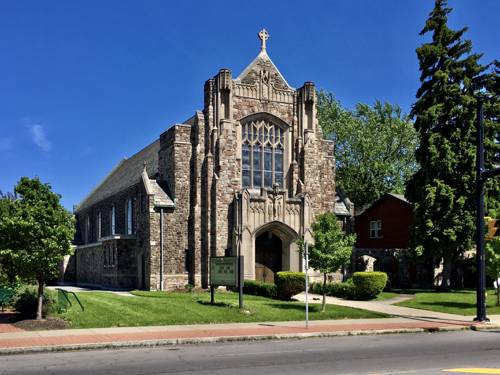
FAQ About The Cultural Significance of Handcrafted Woodworking

What is handcrafted woodworking?
Handcrafted woodworking involves creating wooden items using traditional tools and techniques instead of mass production methods. Each piece is individually crafted, often reflecting the distinctive style and cultural heritage of the artisan. This method emphasizes quality and detailed craftsmanship in contrast to the uniformity of machine-produced items.

How does handcrafted woodworking influence modern design?
Handcrafted woodworking influences modern design by preserving traditional techniques and integrating them into contemporary aesthetics. Designers often draw inspiration from the unique textures, patterns, and forms of handcrafted woodwork, incorporating these elements to bring warmth, character, and a touch of history into modern spaces. This fusion highlights the value of craftsmanship in a world that increasingly relies on automation.

What cultural heritage is associated with woodworking?
Many cultures around the world have rich traditions in woodworking, including Asian, European, and African cultures. Each culture reflects its values and historical development through its woodworking styles. For example, Japanese woodworking typically emphasizes precision and minimalism, while Inuit carvings often depict natural phenomena and animal life. These cultural heritages are passed down through generations and manifest in unique artistic expressions.

Why is traditional woodworking valued in artistic expression?
Traditional woodworking is valued in artistic expression for its ability to evoke a sense of connection to history and heritage. It enables artisans to express cultural narratives and techniques honed over generations, providing depth and authenticity to artworks. The uniqueness of each handcrafted piece adds to its aesthetic and sentimental value, making it highly cherished in the art world.

What are some common techniques in traditional woodworking?
Common traditional woodworking techniques include carving, whittling, joinery, and turning. Carving involves shaping the wood by cutting away portions with tools like chisels and knives, while whittling is the simpler form using mainly a knife. Joinery focuses on creating joints to fit pieces together without nails or screws, exemplified by dovetail and mortise-and-tenon joints. Turning involves rotating the wood on a lathe to form a symmetrical shape. These techniques are pivotal in creating functional and decorative wood pieces.

What roles do handcrafted woodworking play in preserving cultural identity?
Handcrafted woodworking plays an essential role in preserving cultural identity by maintaining traditional craftsmanship and techniques that are unique to specific communities or regions. These practices help safeguard intangible cultural heritage and stimulate cultural pride, enabling future generations to understand and appreciate their ancestor's skills and artistic expressions. This preservation fosters continuity and celebration of diversity within the global cultural landscape.

How can modern technology integrate with traditional woodworking?
Modern technology can integrate with traditional woodworking by offering new tools that enhance precision and efficiency without compromising the integrity of handcrafted processes. Technologies like CNC machines can be used for preliminary stages or to achieve intricate details, while traditional hand-finishings continue to provide the final touches. This blend allows artisans to innovate and expand their capabilities while preserving the authenticity and soul of their craft.

What are the environmental impacts of handcrafted woodworking?
Handcrafted woodworking typically has a lower environmental impact compared to mass production. It often makes use of locally sourced, sustainably harvested wood, and the process minimizes waste through careful material selection and precision craftsmanship. Since handcrafted pieces are often made to last and are more cherished, they contribute to a more sustainable consumption pattern, reducing the need for frequent replacements.

What is the economic significance of handcrafted woodworking to local communities?
Handcrafted woodworking contributes to the economic vitality of local communities by supporting small businesses and artisans. It creates jobs, generates income, and sustains markets for high-quality, locally made products. These crafts often attract tourism and craft markets, providing further economic benefits by drawing attention to local traditions and cultures. In addition, maintaining skills in traditional woodworking can help diversify the economy in areas reliant on this trade.

How can one start learning traditional woodworking techniques?
To learn traditional woodworking techniques, one can begin by studying under experienced artisans, attending workshops, or enrolling in craft schools that offer courses in woodworking. Many resources are also available online, including tutorials, videos, and digital classes, making it accessible for beginners. Engaging with local woodworking clubs or community centers can provide opportunities for practice and mentorship, and it allows new artisans to gain hands-on experience while networking with enthusiasts.

What makes handcrafted woodworking distinct from machine-produced wooden items?
Handcrafted woodworking is distinct from machine-produced wooden items due to the personalized touch, attention to detail, and uniqueness inherent in handcrafted work. Each piece is individually made, reflecting the skill and creativity of the artisan, while machine-produced items are uniform and lack such personal characteristics. Handcrafted items often have natural imperfections that add to their charm and are typically more durable and higher in quality.

Are there any famous artists known for their work in handcrafted woodworking?
Yes, several renowned artists and artisans are celebrated for their handcrafted woodworking. George Nakashima, a leading figure in creating live-edge furniture, is known for his harmonious blend of Japanese woodworking techniques and modern design. Another influential figure is Sam Maloof, whose sculptured woodworking designs in furniture have shaped American craft. These artists have contributed significantly to the appreciation and evolution of handcrafted woodworking as an art form.

How do handcrafted woodworking techniques evolve over time?
Handcrafted woodworking techniques evolve through the adaptation and incorporation of new influences and ideas. As artisans explore different materials, tools, and cultural exchanges, they can innovate within traditional frameworks. Workshops, schooling, and global communications enable the sharing of knowledge, which helps evolve techniques. This evolution also occurs through experimentation and individual expression, allowing new styles and concepts to emerge while respecting traditional roots.

What types of wood are commonly used in handcrafted woodworking?
Common types of wood used in handcrafted woodworking include hardwoods such as oak, cherry, walnut, and maple. Each wood type offers unique properties in terms of grain, color, and workability. Softwoods like pine and cedar are also used, particularly for carving or lighter constructions. Artisans choose wood based on the desired aesthetic appeal and the functional properties required for the piece.

What are some challenges faced by artisans in handcrafted woodworking today?
Artisans in handcrafted woodworking face challenges such as competition from cheap, mass-produced alternatives, limited access to high-quality materials, and a shrinking market for traditional crafts. Technological advances can be a blessing or a curse, depending on acceptance and adaptation, and financial sustainability can be difficult due to high production time and costs. Furthermore, educating consumers on the value of handcrafted quality over mass production remains an ongoing challenge.

What role do aesthetics play in handcrafted woodworking?
Aesthetics play a central role in handcrafted woodworking, as they influence the design, appeal, and cultural resonance of the piece. The beauty, harmony, and distinctive features in woodwork reflect the artisan's personal expression and skill, contributing to its artistic allure. Such aesthetics offer tangible connections to cultural narratives, nature, and the artisan’s vision, making every piece a work of art.

Can handcrafted woodworking support sustainable practices?
Yes, handcrafted woodworking can support sustainable practices by prioritizing the use of sustainable materials and waste-reduction techniques. Artisans often select timber that is responsibly harvested, use non-toxic finishes, and design products to last, making reparability and timeless design a core principle. Additionally, the focus on quality and craftsmanship encourages consumers to value and retain their pieces longer, aligning with sustainable consumption models.

Why are wood grains important in handcrafted woodworking?
Wood grains are important in handcrafted woodworking because they affect the appearance, texture, and structural integrity of the piece. Artisans consider the grain patterns to enhance the visual interest and beauty of the wood. Grain direction also influences how wood is cut and joined, affecting the piece's stability, function, and overall design. Understanding wood grains is crucial in selecting wood that best suits the artistic and functional intents of the work.

What is the significance of joinery in handcrafted woodworking?
Joinery is significant in handcrafted woodworking as it determines the strength, durability, and visual appeal of a piece. Traditional joinery techniques, such as dovetail, mortise-and-tenon, and tongue-and-groove, are celebrated for their ability to connect wood pieces without additional fasteners, creating strong and elegantly bonded structures. These methods reflect the craftsmanship's skill level, enhancing both the functionality and artistry of the wooden item.

How does handcrafted woodworking connect people to cultural history?
Handcrafted woodworking connects people to cultural history by offering tangible links to past traditions, techniques, and values. Each crafted piece embodies stories, symbolisms, and skills passed down through generations, keeping the cultural narrative alive. By preserving and displaying handcrafted work, cultures can celebrate heritage, foster community identity, and ensure continuity of their unique craftsmanship in future generations.
